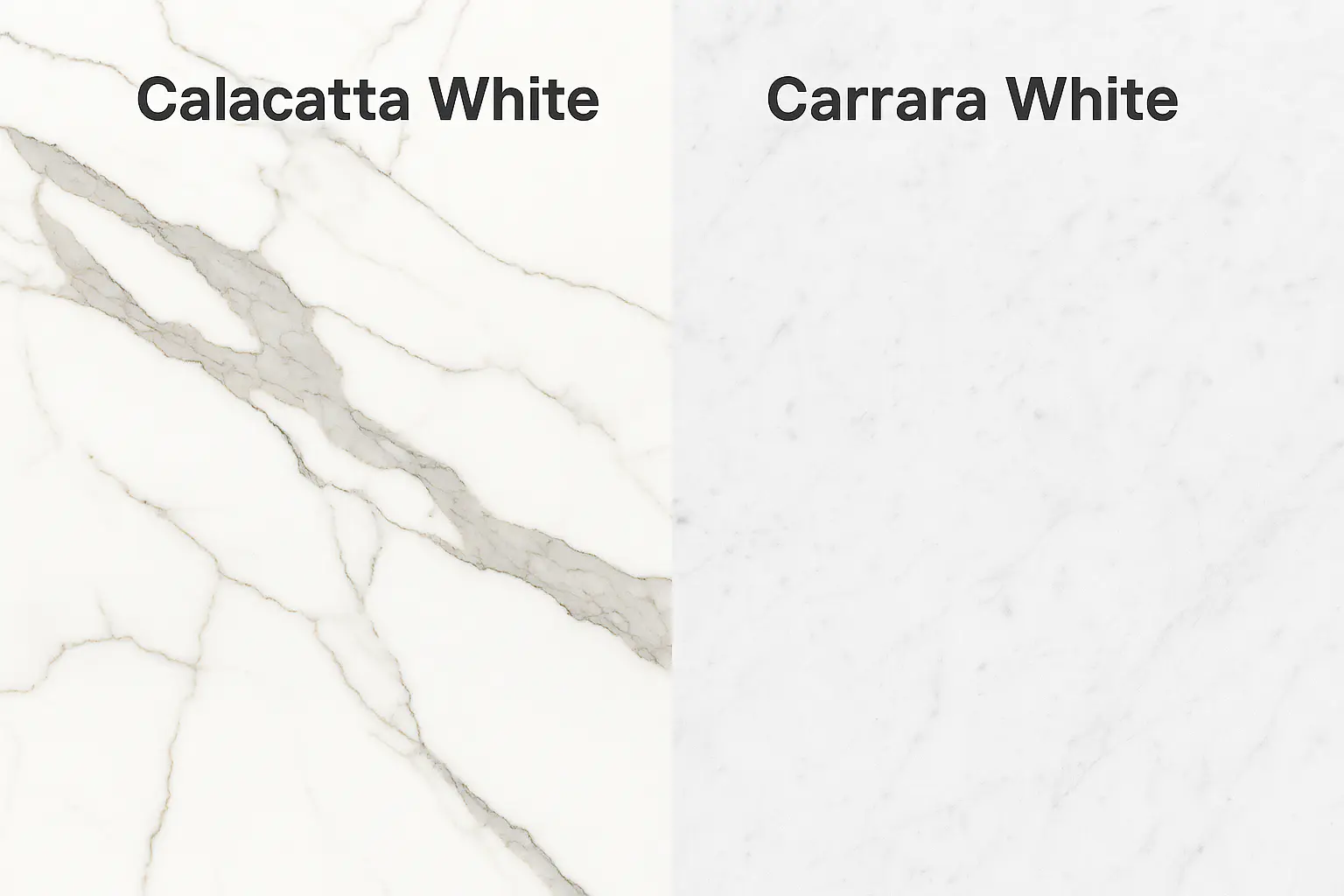Introduction
White marble has long been a symbol of timeless elegance and luxury in architecture and interior design. Among the most sought-after varieties are Calacatta White and Carrara White, both quarried in the Carrara region of Tuscany, Italy. While they may seem similar at first glance, these stones offer distinct aesthetics, price points, and practical considerations.
In this guide, we’ll break down the differences between Calacatta and Carrara marble—and introduce modern alternatives like quartz and sintered stone that mimic their beauty while offering superior durability for everyday use.
1. Origin and Heritage
Both Calacatta and Carrara marbles are sourced from the same region in Italy, but they come from different quarries. This subtle distinction contributes to their unique veining patterns and coloration.
- Calacatta is rarer and considered more luxurious.
- Carrara is more widely available and has been used for centuries in sculptures and buildings.
2. Appearance: Colour and Veining
- Calacatta White Marble
- Background: Bright, crisp white.
- Veining: Bold, dramatic veins in shades of gray, gold, or beige.
- Style: High contrast and luxurious—ideal for statement pieces.
- Carrara White Marble
- Background: Softer white with a bluish or gray undertone.
- Veining: Fine, feathery, and more linear gray veins.
- Style: Subtle and classic—perfect for understated elegance.

3. Cost and Rarity
- Calacatta is significantly more expensive due to its rarity and striking appearance.
- Carrara is more affordable and commonly used in residential and commercial projects.
4. Maintenance and Durability
Both Calacatta and Carrara are porous natural stones, which means they require:
- Impregnator sealers to protect against stains.
- Regular maintenance every few years to preserve their appearance.
- Extra care in kitchens, as acidic substances like lemon juice or vinegar can etch the surface.
5. Modern Alternatives: Quartz & Sintered Stone
For homeowners who love the look of marble but want a more practical solution, quartz and sintered stone offer compelling advantages:
- Mimic marble veining with stunning realism.
- Non-porous, stain-resistant, and scratch-resistant.
- Low maintenance—no sealing required.
- Ideal for home kitchens, bathrooms, and high-traffic areas.
These engineered surfaces provide the elegance of Calacatta or Carrara without the upkeep, making them a smart choice for modern living.
6. Best Applications
| Material | Best For |
|---|---|
| Calacatta | Feature walls, luxury countertops, vanities |
| Carrara | Flooring, backsplashes, classic bathrooms |
| Quartz/Sintered Stone | Kitchens, outdoor areas, family homes |
Conclusion
Choosing between Calacatta and Carrara depends on your design goals, budget, and lifestyle. If you’re aiming for bold luxury, Calacatta is unmatched. For timeless charm, Carrara is a classic. And if you want the marble look with modern performance, quartz and sintered stone offer the best of both worlds.
If you're interested in exploring the Calacatta series of quartz stone, please take a look at the catalogue provided below: -
Calacatta & Carrara Series
Check out Catalogue